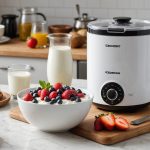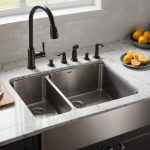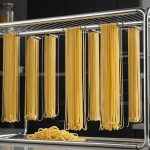Understanding Breakfast Bar Design
In modern kitchen layouts, a breakfast bar proves invaluable, merging functionality with style. Serving dual purposes, it provides a convenient space for quick meals and a social hub for gatherings. The design of a breakfast bar can significantly influence its effectiveness and appeal in your kitchen renovation ideas.
There are various styles available that cater to different tastes and functionalities:
Also to see : The ultimate guide to selecting ideal kitchen flooring for your uk coastal home
-
Straight Breakfast Bars: Traditional and easy to install, offering streamlined seating and space efficiency.
-
L-shaped Breakfast Bars: Adding dimension to the kitchen, ideal for separating cooking areas from dining spaces.
Also to discover : Transform your uk kitchen: eco-friendly designs to reduce food waste effectively
-
Curved Breakfast Bars: Offering a modern flair and a smooth transition between kitchen elements.
Each style enhances social interaction by inviting family and friends to gather around, whether it’s for a quick coffee or extended cooking sessions. Beyond aesthetics, consider the height, material, and seating options to ensure the bar complements the rest of the kitchen.
A well-thought-out breakfast bar design not only boosts kitchen functionality but also acts as a focal point, encouraging more engaging and enjoyable dining experiences. The choice of materials and finishes can further enrich the kitchen’s overall decor, making the space both practical and inviting.
Choosing the Right Style
Selecting the ideal breakfast bar style significantly influences your kitchen’s overall aesthetic. The chic kitchen design trend often showcases a blend of contemporary, rustic, or traditional elements.
Contemporary styles offer sleek, modern lines with minimalistic features. These designs often employ materials like stainless steel or glass, favouring neutral tones that provide a clean, crisp appearance. They cater to homeowners who appreciate understated elegance and futuristic touches in their kitchen spaces. In contrast, rustic styles evoke a warm and cosy charm using natural elements such as wood and stone. They are perfect for individuals who prefer a homey atmosphere with a touch of countryside warmth, often incorporating earthy colours and textured finishes.
Traditional breakfast bars present a timeless appeal through classic details and rich woods, appealing to those who appreciate ornate craftsmanship and a sense of nostalgia.
When choosing between these styles, consider factors like your existing kitchen aesthetics, the desired mood you want to create, and your personal taste. Keeping abreast of current trends can also help refine your choice. Modern trends often blend these styles, offering hybrid solutions that provide both versatility and a unique flair to enhance your kitchen’s visual appeal.
Selecting Materials and Finishes
Choosing the right breakfast bar materials can significantly impact a kitchen’s functionality and style. Durable kitchen surfaces are essential for withstanding daily wear and tear.
Common materials for breakfast bars
-
Wood is a popular choice for breakfast bars, offering a warm and inviting feel. It’s versatile, but requires regular maintenance to protect against scratches and moisture.
-
Granite is renowned for its durability and luxurious appearance. It’s highly resistant to heat and scratches, making it a low-maintenance option. However, it can be costly.
-
Quartz combines natural beauty with enhanced durability. It’s non-porous, which makes it resistant to stains and bacteria, offering easy maintenance. Though similar in price to granite, it offers a wider range of color options.
-
Laminate is an economical option, available in various colors and patterns. It’s easy to clean but less durable compared to other materials, potentially needing replacement sooner.
Pros and cons of each material choice
Considering cost, maintenance, and durability is crucial when selecting materials. Granite and quartz offer superior durability, making them ideal for long-term investment. Wood provides aesthetic versatility but demands upkeep, and laminate offers affordability with some compromise on longevity.
Finishing touches that elevate design
Emphasizing color and texture combinations can enhance the overall appeal of your breakfast bar. Choose finishes that complement existing kitchen elements, creating a cohesive design.
Key Measurements and Layout Considerations
Designing a breakfast bar requires an understanding of standard dimensions and how to integrate it seamlessly into your kitchen layout. Typically, a breakfast bar should have a depth of at least 16 to 20 inches. This allows for comfortable seating and adequate space for dining and serving. The height is usually 36 inches for a standard kitchen counter or 42 inches for a bar-height counter, creating distinct zones for food prep and casual dining.
When planning your kitchen layout, consider its integration. Place the bar where it won’t obstruct movement or compromise the functionality of your kitchen work triangle—typically formed by the fridge, sink, and stove. Maximising accessibility not only enhances the bar’s utility but also maintains an inviting atmosphere.
For smaller kitchens, consider a narrower breakfast bar that doubles as additional counter space or storage. Folding or extendable options provide flexibility without overwhelming the space. In larger kitchens, explore multi-level bars or T-shaped designs for ample seating and versatility.
Remember, successful kitchen layout planning lies in striking a balance between your lifestyle needs and the spatial dynamics of your kitchen, ensuring both practicality and aesthetic appeal.
Budgeting for Your Breakfast Bar
Setting a realistic breakfast bar budget is crucial for successful and cost-effective kitchen renovations. Start by identifying the scope of the project. Determine whether you want a small extension or a full-scale decorative makeover. This will help set a baseline for financial planning. When evaluating costs, differentiate between high-return investments and low-cost options. High-return investments include quality materials that enhance durability and add aesthetic value, such as granite countertops or oak cabinetry. These items may have a higher upfront cost but can increase home value.
On the other hand, look for areas where you can implement low-cost options. For instance, opting for pre-fabricated units or retail store discounts may help reduce expenses without sacrificing quality. These options can freshen your space while maintaining budget constraints.
Get creative in finding ways to save. Repurposing existing materials, such as refurbishing old chairs or creating wall art, can be cost-effective. Scour online marketplaces for gently-used decor or kitchen accessories. By focusing on both practicality and style, you ensure a beautiful yet budget-friendly breakfast bar. Balancing these elements allows you to create a kitchen space that is both wallet-friendly and visually appealing.
Expert Tips and Common Pitfalls
Renovating a kitchen can be both exciting and daunting. Knowing what pitfalls to avoid can set you on the right path.
Expert Advice on Planning and Execution
Before jumping into your kitchen renovation, it’s crucial to plan meticulously. Begin by identifying your kitchen’s primary functions. Is it primarily for cooking, entertaining, or both? Clarifying this will guide your layout decisions. Experts recommend balancing style with functionality. Consider open shelving for easy access or a backsplash that is both aesthetic and practical.
Common Mistakes Homeowners Make
A frequent error is underestimating space requirements, especially around breakfast bars. Ensure there’s adequate room to navigate comfortably. Many homeowners overlook the importance of lighting. Proper illumination, including task and ambient lighting, enhances both function and atmosphere. Another common blunder is ignoring long-term needs; plan for future adaptability.
Solutions to Typical Challenges
Deciding between professional help and a DIY approach can be tricky. While DIY might seem cost-effective, engaging seasoned professionals often ensures a smoother process and superior results. Prioritize functionality over form to avoid design regrets. Make sure you have enough counter space and storage for your needs, and think about how the space will adapt as your needs change.
Visual Inspiration and Case Studies
Finding breakfast bar inspiration that matches your personal style and home aesthetics can be a game-changer when revamping your kitchen space. Showcasing real-life examples of successful breakfast bars provides a valuable insight into what designs work well. Whether you’re drawn to modern minimalism or rustic charm, analyzing these designs highlights key elements that can transform your space.
Successful kitchen revamps often focus on integrating both functionality and style. For instance, breakfast bars that utilise space efficiently, like incorporating under-bar storage or compact seating, maximize the kitchen’s usability without sacrificing elegance. A sleek, marble countertop can serve as a stylish focal point while maintaining practicality with its easy-to-clean surface.
When designing a breakfast bar, consider how your personal style can shine through. Are you inspired by a sleek, industrial look or a warm, homely feel? Choosing the right materials, such as wood or steel, helps reflect your taste. Embrace colours and textures that resonate with your home’s overall theme.
Real-life examples, such as airy open-plan kitchens with breakfast bars that offer both dining and casual seating, demonstrate how effectively integrating a breakfast bar can enhance your kitchen’s functionality and aesthetics. Let these inspirations guide your choices and transform your cooking space into something truly special.











